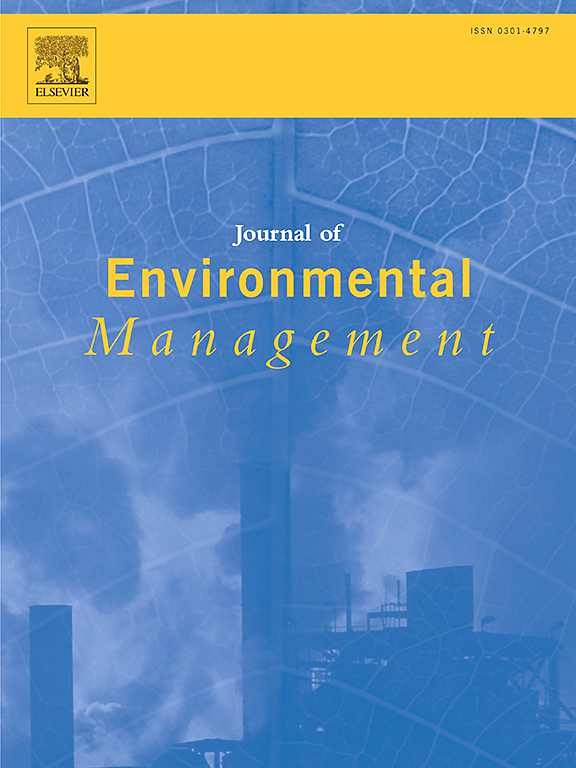抗议者行动中深海矿产投资的平衡策略:平衡陆地利益和海洋保护
IF 8.4
2区 环境科学与生态学
Q1 ENVIRONMENTAL SCIENCES
引用次数: 0
摘要
深海采矿(DSM)为生产新能源材料提供了资源,为陆地环境带来了好处,同时也给海洋生态系统带来了重大风险。为了减轻海洋污染,必须评估三方之间的行为相互作用:新能源材料供应商(NEMSs)、抗议者和政府机构。本研究通过随机微分方程建立了一个包含随机扰动的博弈论框架。结果表明:(1)政府立场信息的不完全扭曲了NEMSs的投资范围。通过加强社会福利举措,新兴经济体可以获得更明确的政府支持,优化投资环境。有趣的是,分析表明,模棱两可的政府态度可能会无意中激励NEMSs加强其社会责任。在我们的模拟实验中,政府对DSM的模糊处理有可能将NEMSs提供的社会福利从原来的10%增加到20%。(2)政府政策的一致性和有效性调节了抗议者对NEMSs决策过程的影响。相对于外部政策的模糊性,政府内部对DSM的立场应保持清晰和一致。相关部门针对不同利益相关者群体采取的不同政策方法,可以有效地引导社会力量,促进DSM的负责任发展。(3)环保抗议活动并不总是完全环保的。一些抗议活动已经沦为象征性的活动,缺乏实质性的影响。避免形式主义是维护社会监督有效性和合规性的首要任务。(4)最后,通过设计补贴、处罚和混合框架三种类型的规制,扩展了主模型的核心结果。在此基础上,给出了基于规制强度的有效惩罚弹性,并给出了最优补贴形式。本文章由计算机程序翻译,如有差异,请以英文原文为准。
Equilibrium strategy for deep-sea mineral investments amid protester actions: Balancing terrestrial benefits and marine preservation
Deep-sea mining (DSM) supplies resources to produce new energy materials, which offers benefits for terrestrial environments while causing significant risks to marine ecosystems. To mitigate marine pollution, it is essential to assess the behavior interactions among three parties: new energy materials suppliers (NEMSs), protesters, and governmental bodies. This study develops a game-theoretic framework incorporating stochastic disturbances via stochastic differential equations. The results indicate that: (1) Incomplete information about the government stance distorts the investment range for NEMSs. By strengthening social welfare initiatives, NEMSs can expect clearer government support, optimizing the investment environment. Intriguingly, the analysis suggests that ambiguous governmental attitudes may inadvertently incentivize NEMSs to enhance their social responsibilities. In our simulation experiments, the government's ambiguous approach to DSM has the potential to increase the social welfare provided by NEMSs from the original 10 %–20 %. (2) The consistency and efficacy of governmental policies moderate the impact of protesters on NEMSs' decision-making processes. In contrast to the ambiguity of external policies, the government's internal stance on DSM should maintain clarity and consistency. The divergent policy approaches applied by relevant authorities to various stakeholder groups can effectively channel social forces to facilitate the responsible development of DSM. (3) Environmental protests are not always entirely eco-friendly. Some protest activities have devolved into mere symbolic exercises, lacking substantive impact. Avoiding formism is the primary task to maintain the effectiveness and compliance of public supervision. (4) Finally, the core results of the main model are extended by designing three types of regulations: subsidies, penalties, and mixed framework. Based on this, we give an effective penalty elasticity based on the regulation intensity and provide an optimal form of subsidy.
求助全文
通过发布文献求助,成功后即可免费获取论文全文。
去求助
来源期刊

Journal of Environmental Management
环境科学-环境科学
CiteScore
13.70
自引率
5.70%
发文量
2477
审稿时长
84 days
期刊介绍:
The Journal of Environmental Management is a journal for the publication of peer reviewed, original research for all aspects of management and the managed use of the environment, both natural and man-made.Critical review articles are also welcome; submission of these is strongly encouraged.
 求助内容:
求助内容: 应助结果提醒方式:
应助结果提醒方式:


